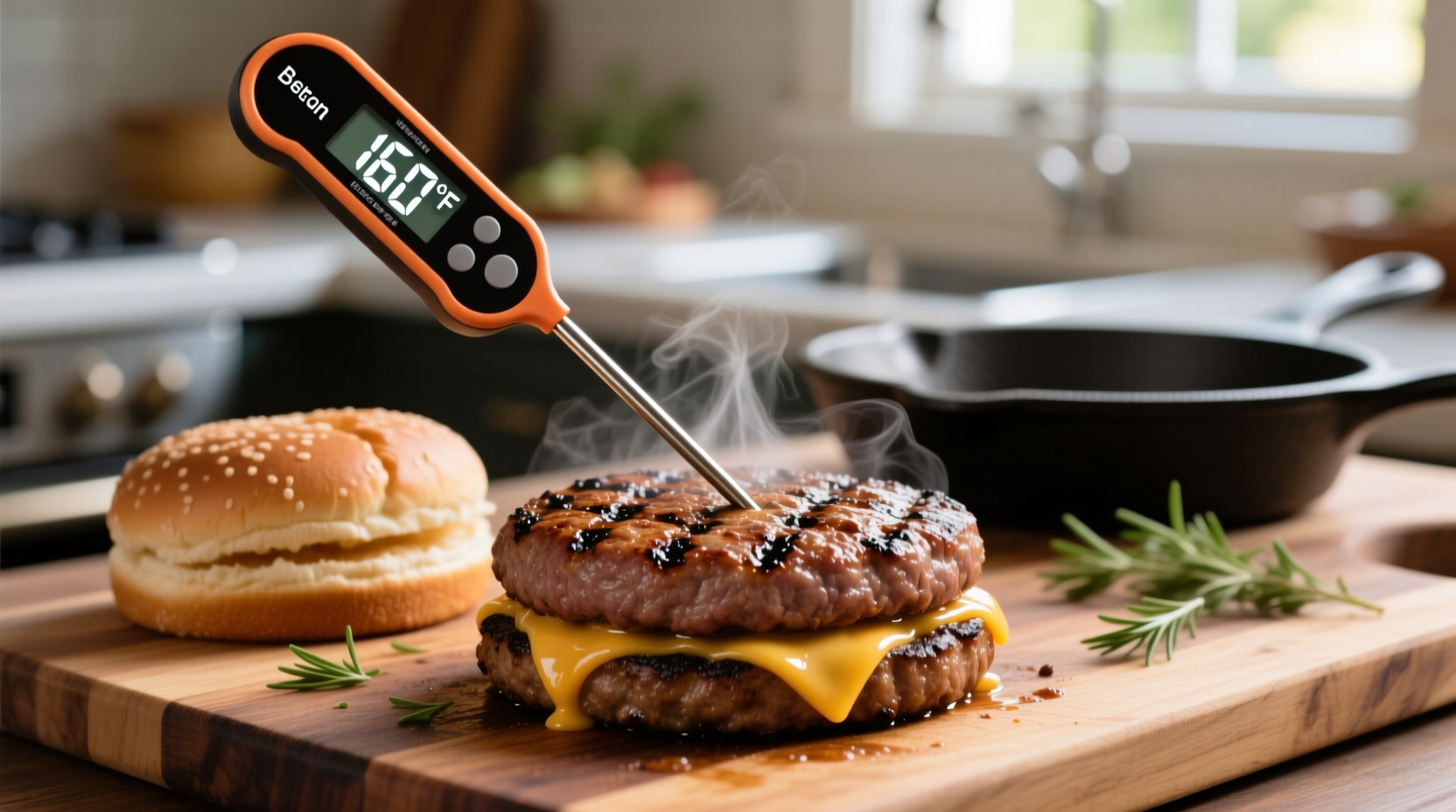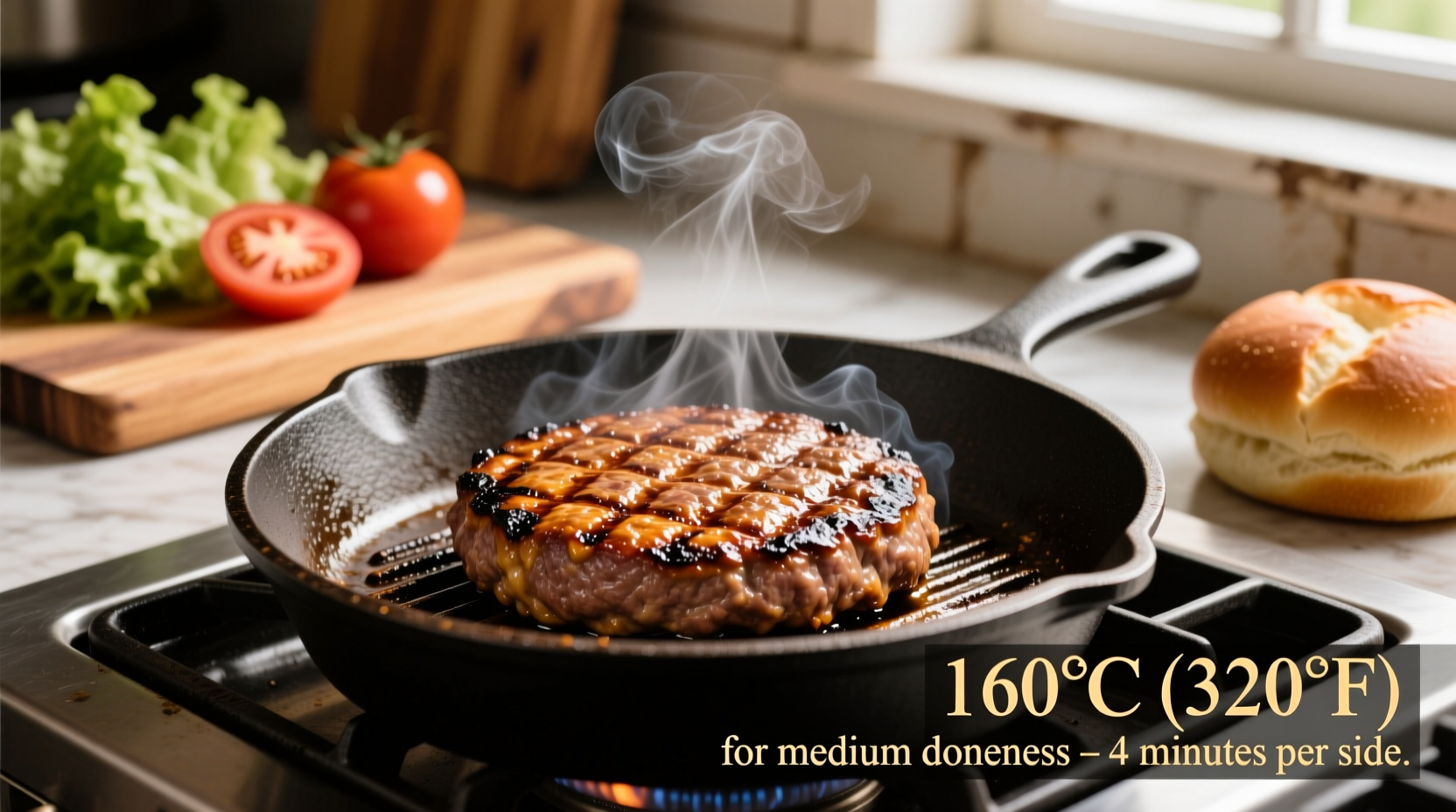Why Temperature Matters More Than Timing for Perfect Hamburgers
When cooking hamburgers, precise temperature control is your most reliable safety and quality tool. Unlike steak, ground beef requires thorough cooking because bacteria from the surface get distributed throughout during grinding. This makes visual cues like color changes dangerously unreliable—undercooked burgers can appear brown while still harboring harmful pathogens.
USDA Food Safety Standards for Ground Beef
The U.S. Department of Agriculture's Food Safety and Inspection Service (FSIS) establishes clear guidelines for safe hamburger preparation. Their research shows that E. coli O157:H7, the most dangerous pathogen in ground beef, is eliminated when internal temperatures reach 160°F (71°C). This standard applies regardless of cooking method—grill, stovetop, or broiler.
| Doneness Level | Recommended Temp | USDA Safety Status | Texture Characteristics |
|---|---|---|---|
| Rare (not recommended) | 120-125°F | Unsafe | Raw center, cold |
| Medium-Rare (not recommended) | 130-135°F | Unsafe | Cool red center |
| Medium | 140-145°F | Risky | Warm pink center |
| Medium-Well | 150-155°F | Marginally Safe | Small pink area |
| Well-Done (Recommended) | 160°F | Safe | No pink, firm texture |
Proper Thermometer Technique for Accurate Readings
Insert an instant-read thermometer horizontally through the side of the patty to reach the geometric center. Avoid touching the cooking surface, as this gives false readings. Check temperature when burgers appear nearly done—typically after 3-4 minutes per side on medium-high heat. Remember that temperature continues rising 5-10°F during resting (carryover cooking), so remove burgers from heat at 155°F if you prefer slightly less than well-done.

Factors Affecting Hamburger Cooking Temperature
Several variables impact how quickly your burgers reach safe temperatures:
- Patty thickness: Thicker patties (¾ inch or more) cook more evenly than thin ones
- Starting temperature: Chilled patties take longer to cook than room-temperature ones
- Cooking surface heat: High heat creates better searing but increases risk of uneven cooking
- Meat composition: Higher fat content (80/20) conducts heat differently than lean blends
Contextual Considerations for Hamburger Temperature
While the 160°F standard applies universally for home cooking, professional kitchens sometimes use lower temperatures under strict conditions. According to the FDA Food Code, restaurants may serve ground beef at 155°F if held at that temperature for 15 seconds, but this requires precise temperature monitoring systems unavailable in most homes. USDA documentation explicitly states that home cooks should always use the 160°F guideline.
Avoiding Common Temperature Mistakes
Many home cooks make these critical errors:
- Pressing burgers with spatula: Squeezes out juices and creates uneven cooking
- Flipping too frequently: Prevents proper sear formation needed for flavor development
- Checking temperature too early: Opening the grill or moving patties disrupts cooking
- Not cleaning thermometer between checks: Risk of cross-contamination
For best results, flip burgers only once and check temperature during the final minute of cooking.
Essential Food Safety Practices Beyond Temperature
Temperature control is just one component of safe hamburger preparation. Follow these additional guidelines from the Centers for Disease Control and Prevention:
- Keep raw meat separate from other foods
- Wash hands thoroughly after handling raw ground beef
- Clean all surfaces and utensils that contact raw meat
- Refrigerate leftovers within 2 hours (1 hour if above 90°F)
Frequently Asked Questions
Can I rely on burger color to determine doneness?
No, color is unreliable for determining hamburger doneness. Ground beef can appear brown before reaching safe temperatures or remain pink even when properly cooked. Only a meat thermometer provides accurate doneness verification.
What happens if I cook burgers below 160°F?
Cooking ground beef below 160°F risks survival of harmful bacteria like E. coli O157:H7. These pathogens can cause severe foodborne illness with symptoms including abdominal cramps, diarrhea, and vomiting. The USDA maintains that 160°F is the only safe temperature for home cooking.
How long should I let burgers rest after cooking?
Rest burgers for 3-5 minutes after cooking. This allows juices to redistribute throughout the patty and completes the cooking process through carryover heat. Resting also prevents juices from running out when you cut into the burger.
Why do restaurant burgers sometimes appear pink inside?
Some restaurants serve burgers below 160°F under controlled conditions with precise temperature monitoring. However, this practice carries inherent risks and isn't recommended for home cooking. Pink color can also result from ingredients like tomatoes or vinegar in the meat mixture, not necessarily undercooking.
What's the best type of thermometer for checking burger temperature?
An instant-read digital thermometer provides the most accurate and timely readings for hamburgers. Look for one with a thin probe that can be inserted horizontally into the patty's center. Calibrate regularly according to manufacturer instructions for consistent accuracy.











 浙公网安备
33010002000092号
浙公网安备
33010002000092号 浙B2-20120091-4
浙B2-20120091-4